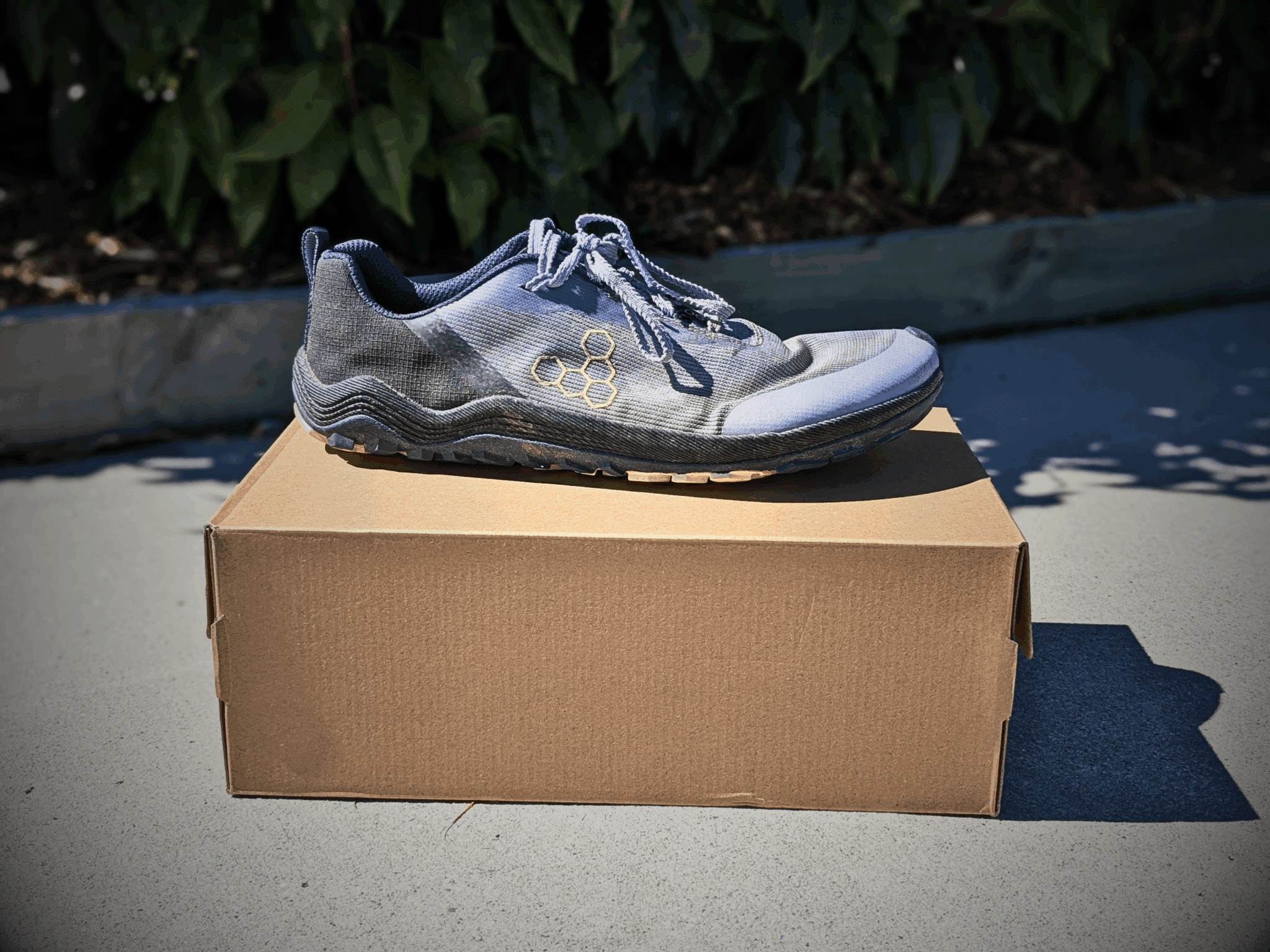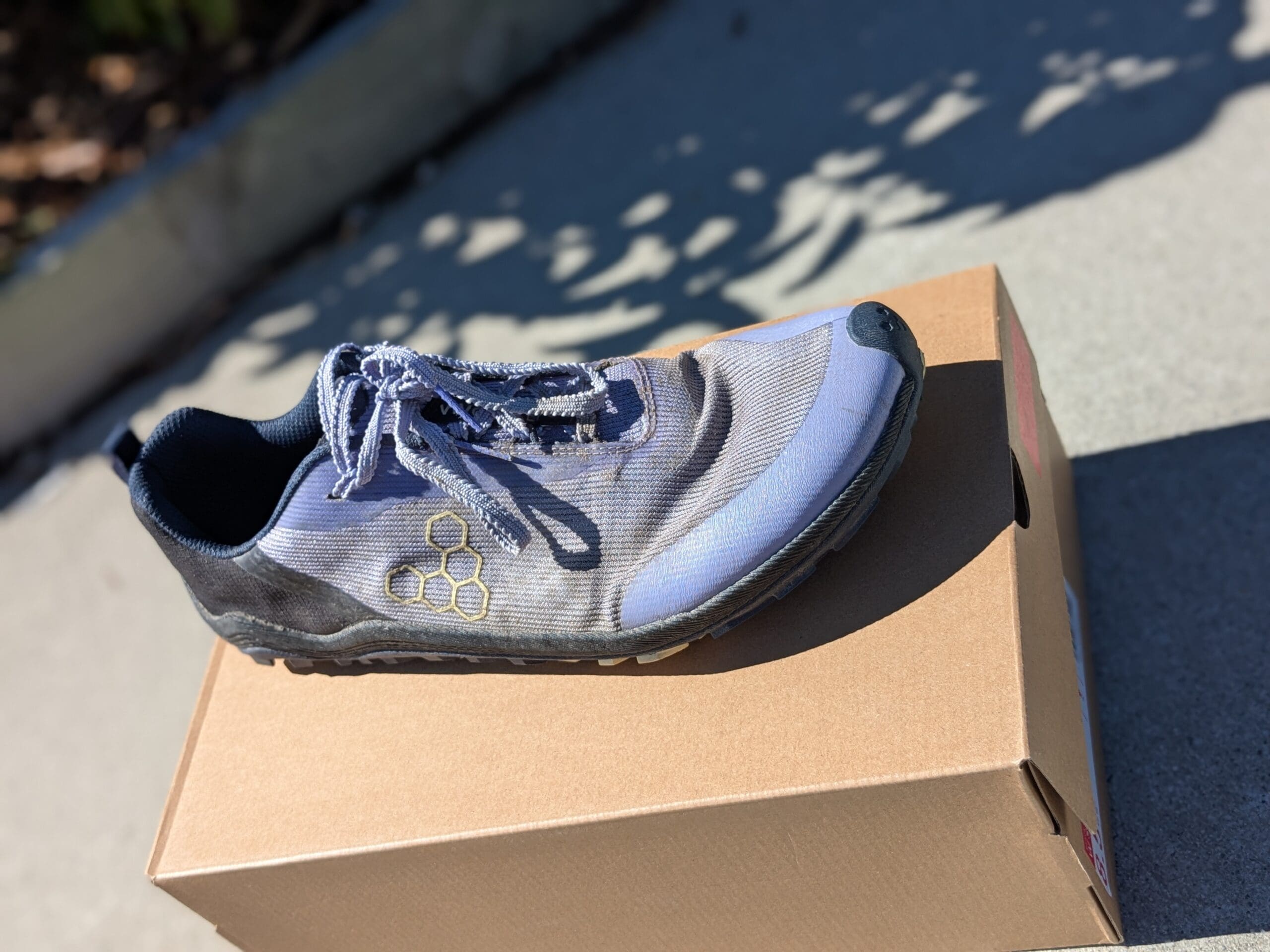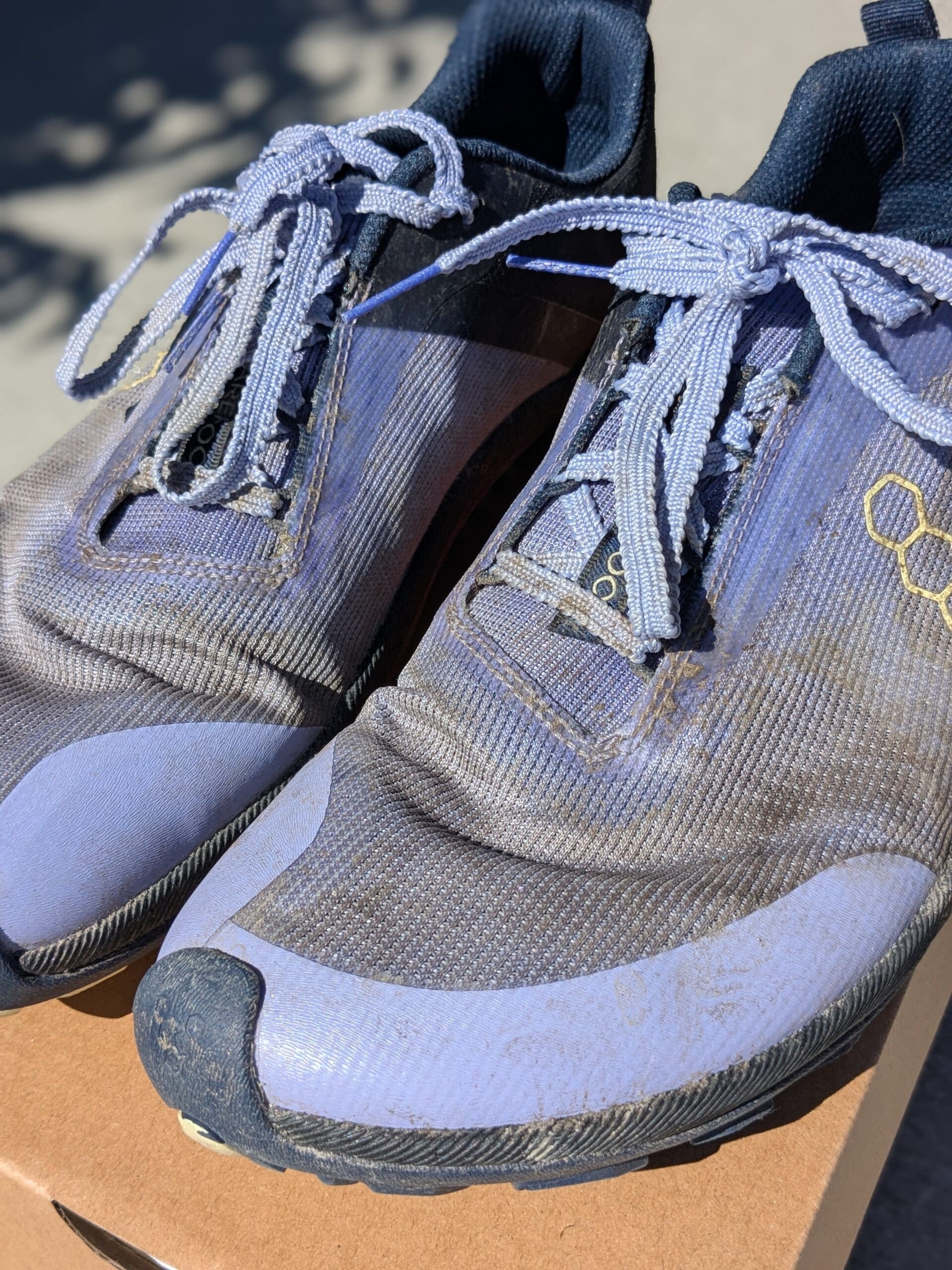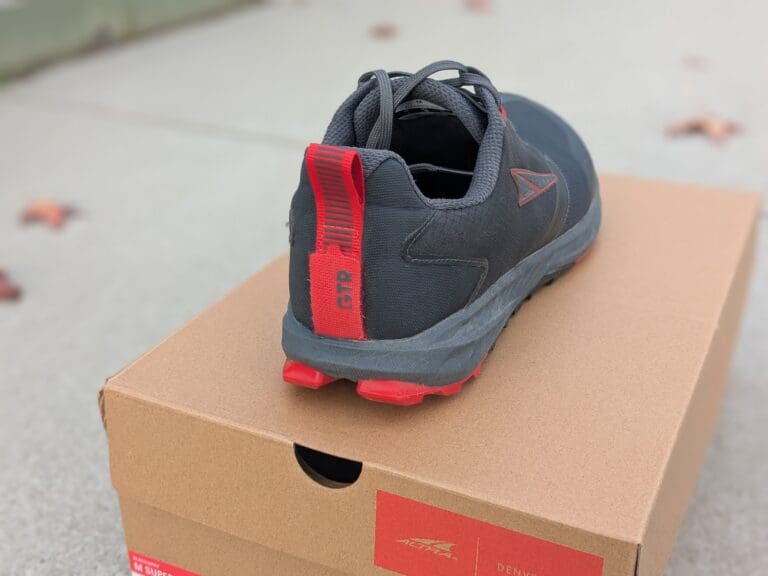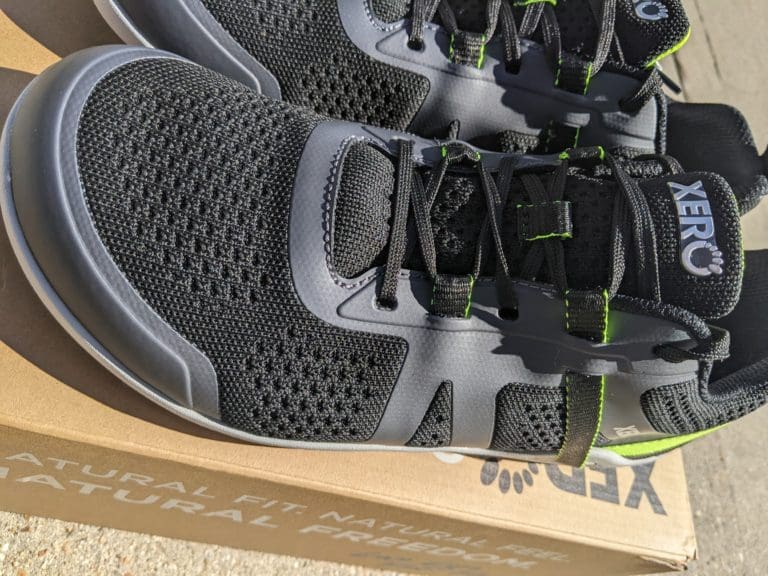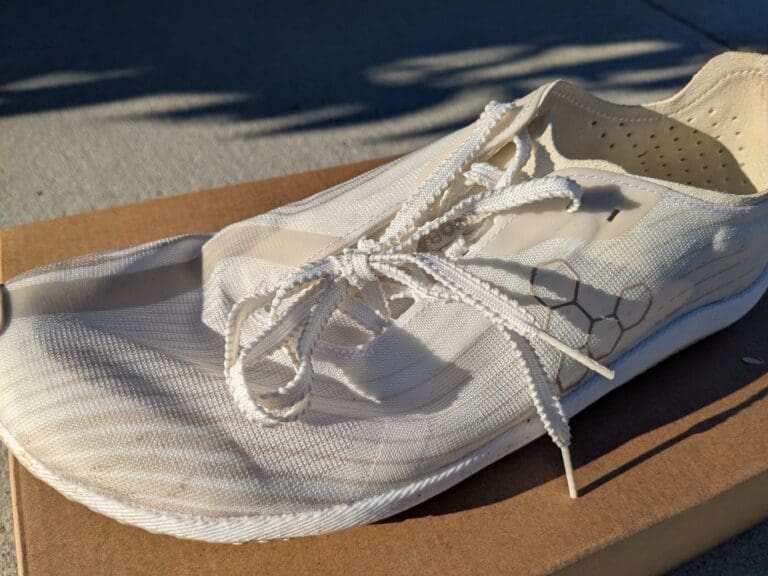Looking for a truly minimal trail shoe that won’t weigh you down? The Vivobarefoot Primus Trail Flow might be what you’re after—or it might leave you wanting more protection.
Affiliate Disclosure: By clicking through the links on this page and purchasing the products, you’ll be helping me out. This is done because I receive a kickback from the sellers at no extra cost to you! Thank you so much for supporting us!
Weight
8.11 oz/ 230g for men’s EU42
Stack height
8-10mm total stack height (3mm lugs)
Zero Drop
Made for
Dry to mildy wet conditions
Shorter distance Barefoot training
Pros & Cons
✔ Tuned Performance fit
✔ Extremely flexible and lightweight (230g for EU size 42)
✔ Better traction that older Vivobarefoot trail models
✔ Great ground feel
✖ Pricey at $190
✖ Could have durabiltiy problems on the outsole and toe crease point
✖ Narrow for some
I’ve put about 50 km on the Primus Trail Flow, and I’ve got some clear thoughts on where this shoe shines and where it falls short. This is Vivobarefoot’s latest lightweight trail option, building on their Flow lineup but with a more aggressive outsole for off-road adventures. If you’re after a performance-focused, ultra-minimal trail shoe and you’re already well-conditioned to barefoot running, this could work. But there are some important caveats we need to talk about.
Affiliate Disclosure: By clicking through the links on this page and purchasing the products, you’ll be helping me out. This is done because I receive a kickback from the sellers at no extra cost to you! Thank you so much for supporting us!
The Primus Trail Flow runs relatively narrow for a barefoot shoe, especially around the little toe area. The taper comes in pretty quickly on that side, creating a more restrictive toe box than most barefoot runners expect. The big toe side is nicely squared off, but if you have a wide forefoot, this shoe likely won’t work for you.
Which minimal running shoe is for you?
Take a quick 5-question quiz to identify the perfect minimal running shoe for your feet! You'll get both road and trail options based on your answers!
I went with my usual EU 42, which is my standard Vivobarefoot size (though not always my size in other brands—I tend to stick with true sizing in Xero shoes, for example). The shoe fits quite long, which is typical for Vivobarefoot. But here’s the thing: because of the narrow nature of this shoe, even though it runs long, you’ll likely still need that extra length to get adequate width through the midfoot and forefoot. Don’t be tempted to size down.
The shoe fits a little deeper than some other Vivobarefoot models, mainly because it ships without an insole. You’re sitting right on top of the footbed, which makes it feel like any other Vivobarefoot shoe I’ve used without an insole.
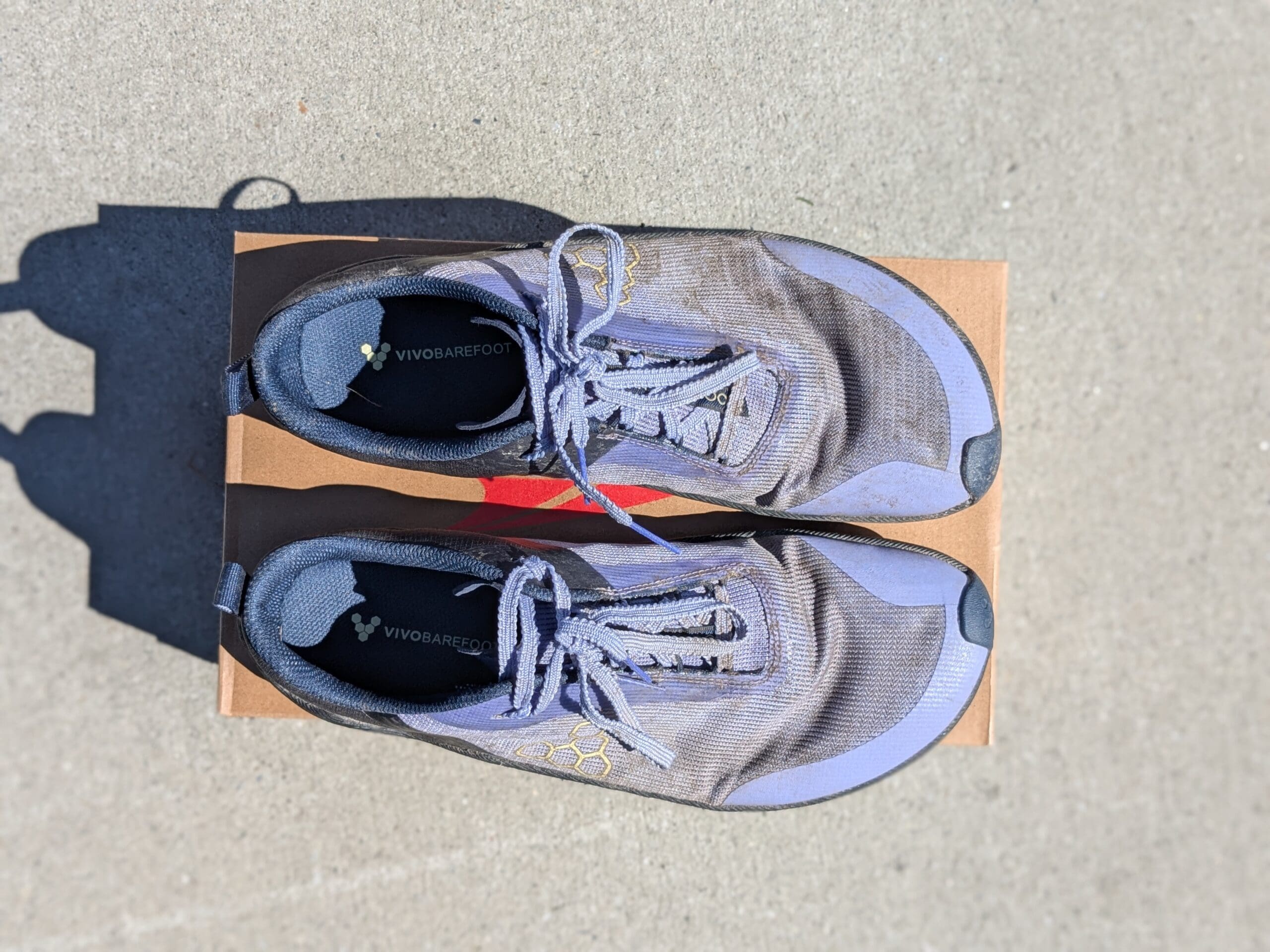
The tongue is made from a thin, vegan suede-like material. It’s quite grippy, which makes getting your foot in and out of the shoe somewhat challenging. You’ll need to reposition the tongue pretty much every time you put the shoe on. On the plus side, this grippy nature means the fit over the midfoot is very secure—there’s no slipping around at all. For a trail shoe, that’s a significant benefit. Combined with the narrower midfoot, you get excellent lockdown when you need it on technical terrain.
The laces feature an interesting ribbed design that locks quite well around the eyelets. Once you get them in place, they don’t slip at all—a good design feature that contributes to the overall secure fit.
The entire heel and upper are completely flexible, with minimal material throughout. This is notably sparse even for a trail shoe, which makes them feel like a true barefoot shoe and keeps the weight impressively low.
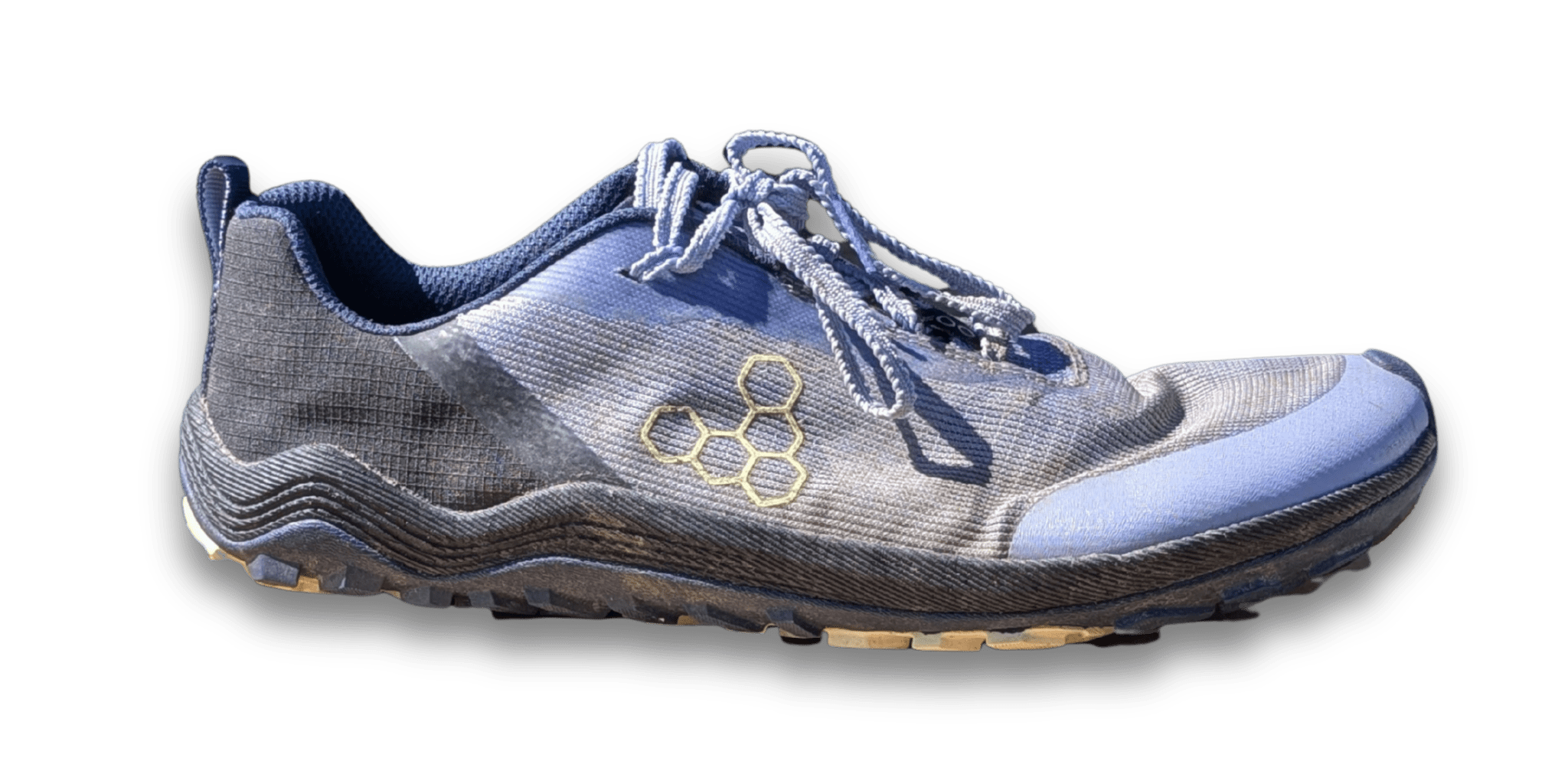
Vivobarefoot Primus Trail Flow
This is a very stripped-down trail shoe. We’re talking minimal materials, minimal protection, and maximum ground feel. And you know what? That’s fun.
The upper is extremely flexible with very little material, especially for a trail option. There’s a flexible toe bumper, but don’t expect it to protect you much if you kick rocks. There’s an interesting feature where the outsole on the big toe side wraps up and over the big toe area, which adds a bit of protection and also raises the toe box slightly away from the toes.
The underfoot cushioning is minimal—we’re talking 8-10mm total stack height. About 3mm of that is the lug depth itself, leaving just a thin layer of foam and rubber between your foot and the trail. There’s no insole, so you’re getting pure, unfiltered ground feedback. You feel quite a lot underfoot, though not to the point where it becomes painful. But make no mistake: you need to be very well-conditioned to barefoot running to use this shoe comfortably on technical trails.
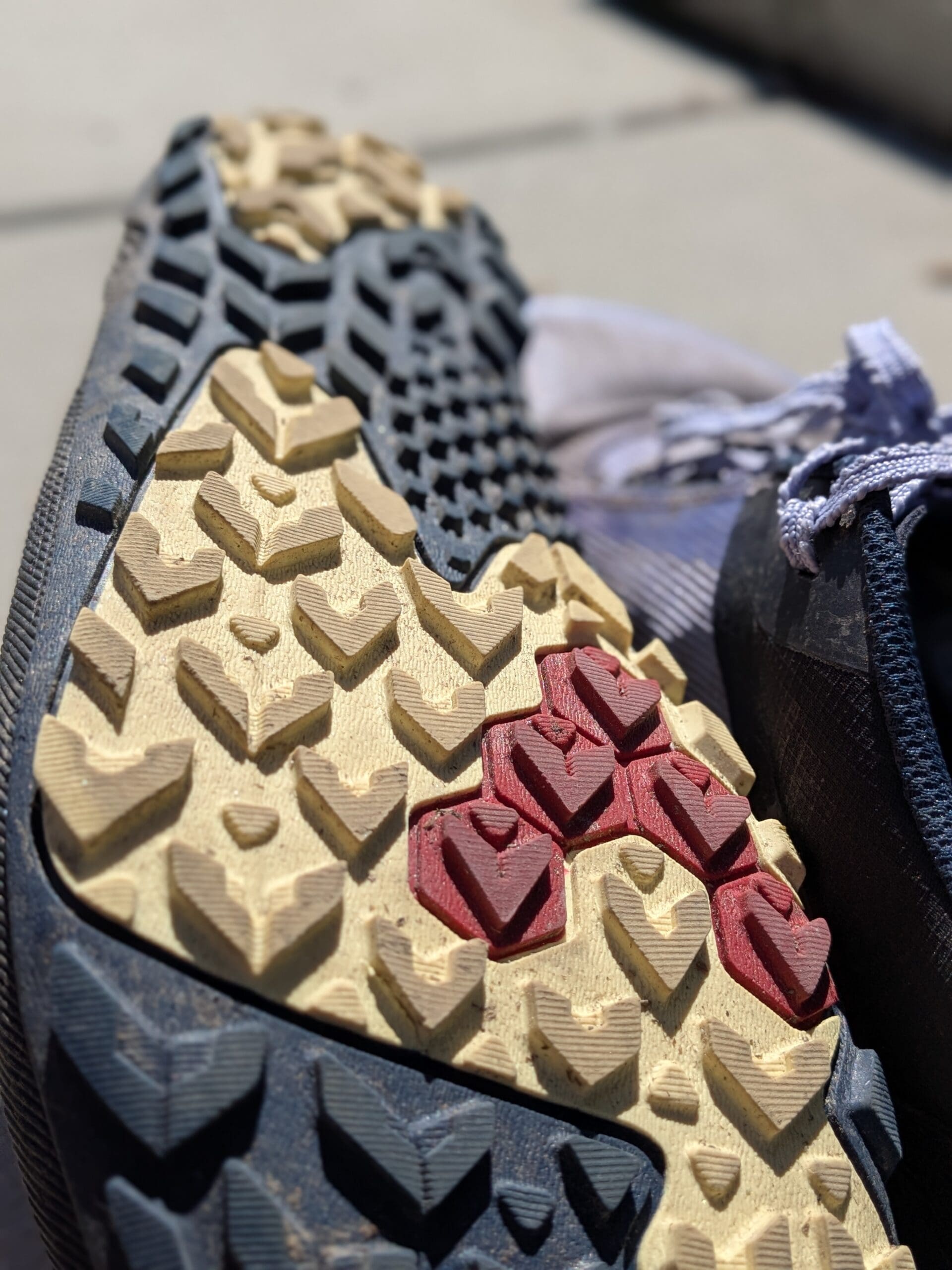
The outsole is a major improvement over older Primus Trail options. Instead of the cross or X-shaped lug pattern from previous versions, this uses a more traditional arrow-shaped lug pattern, especially toward the forefoot. In light mud conditions, I found this worked really well. The lugs are only about 3mm deep, so this isn’t a deep mud shoe by any means. But for dry to moderately wet conditions, it performs admirably.
At 230g for an EU 42, this is one of the lightest trail options out there. That low weight definitely improves agility on the trail. You can move quickly and change direction easily. But as with most things in running shoes, there are trade-offs—in this case, durability and longevity.

Vivobarefoot Primus Trail Flow
Here’s where things get concerning, especially given the $190 USD price tag.
The mesh upper has overlays on much of the shoe, but the toe box area is exposed. This means the mesh over your toes will likely be the first thing to rip or wear through. At the crease points—a common weak spot on Vivobarefoot shoes—there’s minimal reinforcement. While this prevents uncomfortable creasing against your foot, it also means these areas will wear over time and likely blow out eventually.
The outsole is relatively sticky from the start, but I’m already seeing wear after just 50 km. I don’t expect this outsole to last a huge amount of distance. The rubber compound seems to prioritize grip over longevity, which is a choice Vivobarefoot made, but it’s one you need to be aware of.
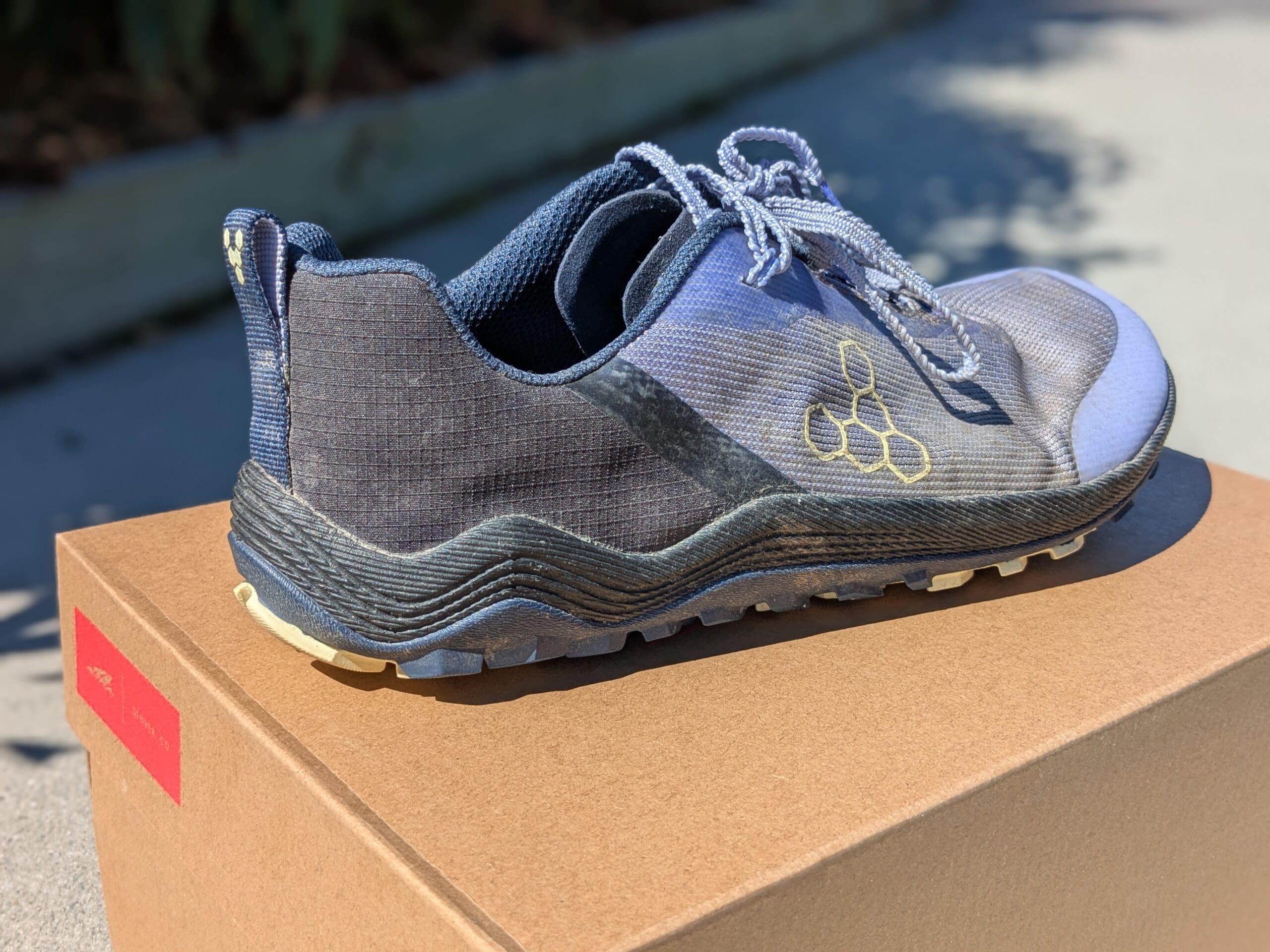
The minimal midsole foam might pack out slightly, but because there’s so little of it, you probably won’t notice much difference even after hundreds of kilometers. The upper and inner liner are flexible enough that they’re unlikely to cause rubbing issues, which is good for longevity in that respect.
Bottom line: for $190, this is not a durable option. If you’re putting in serious mileage on technical trails, you’ll be replacing these sooner than you’d like. This is clearly a performance-focused shoe where weight and feel were prioritized over longevity.

Vivobarefoot Primus Trail Flow
If you’re considering the Primus Trail Flow, here are some alternatives worth looking at:
Xero Shoes Mesa Trail II: This is a cheaper option that’s also wider in the toe box and has a deeper fit. It’s just as minimal—if not more so—but with slightly less protection underfoot. If the narrow fit of the Primus Trail Flow concerns you, start here.
Freet Footwear options: If you need a wider, deeper barefoot trail shoe, Freet makes some of the wider options on the trail market. They’re nowhere near as lightweight as the Primus Trail Flow, and they have a bit more stack height underfoot, but they’ll actually fit if your foot is wider and deeper than what Vivobarefoot accommodates.
Older Vivobarefoot Primus Trail models: If you’re looking at this shoe, you might also consider the previous Primus Trail options. The Flow version is lighter and has better traction, but if durability is a bigger concern than weight, the older models might hold up better.

Vivobarefoot Primus Trail Flow
The Vivobarefoot Primus Trail Flow is a specialized tool. It’s designed for barefoot runners who are already well-conditioned, who prioritize lightweight performance over durability, and who have narrower feet.
If that’s you, and you’re willing to accept the trade-offs in durability for the benefits of a truly minimal, agile trail shoe, the Primus Trail Flow delivers. The ground feel is excellent, the traction works well in most conditions, and the weight makes you feel fast on technical terrain. This is completely my favorite Vivobarefoot trail shoe I’ve used.
But if you’re new to barefoot running, have wider feet, or put in high mileage and need shoes that last, look elsewhere. The narrow fit, minimal protection, and questionable durability at this price point make it a hard sell for most runners.
I’ll keep running in mine for now, but I’m keeping a close eye on that outsole wear. At this rate, I suspect I’ll be looking for a replacement sooner than I’d like at this price point.

Vivobarefoot Primus Trail Flow
